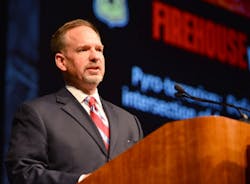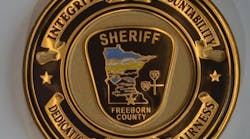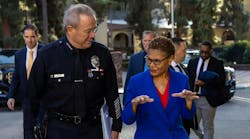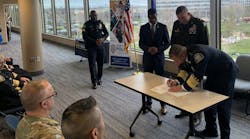The federal government is prepared for the use of fire as a weapon, and one official says that pyro-terrorism is something all responders need to be ready to combat.
Robert Baird, Deputy National Fire Director, Fire and Aviation Management, U.S. Forest Service, spoke Wednesday in San Diego at the opening ceremonies of Firehouse World -- a conference affiliated with Officer.com's sister website Firehouse.com.
“Arson in the [Wildland/Urban interface] is a real threat,” said Baird in his keynote comments. “Anything we can do to reduce it is a real accomplishment."
Baird gave a quick review of the use of arson and pyro-terrorism throughout modern history, starting with the fire balloon bombs Japan launched on the mainland United States during World War II. Of the 9,000 launched, 300 hit the mainland.
It was also identified as a military weapon during the Vietnam War. The attacks on the World Trade Center were also a case of pyro-terrorism in his mind, Baird said, noting that Osama Bin Laden was a civil engineer and knew the effect the fuel on the planes would have.
In 2002, federal authorities arrested José Padilla, an NYC native and declared enemy combatant, on suspicion that he was plotting with terrorist Khalid Sheikh Mohammed, the architect of the 911 attacks on the United States, to detonate a dirty bomb in Chicago.
During the investigation, Baird said authorities learned that Khalid figured out it would be too difficult to get a dirty bomb into the country and detonate it. So a plan was hatched to solicit volunteers to burn 20 apartment buildings in New York City simultaneously using gasoline.
In 2004, the FBI came upon intelligence and issued an alert to the National Interagency Fire Center (NIFC) suggesting that Al Queda had plans to start wildland fires in Montana, Wyoming, Utah and Colorado, Baird said, noting that all the material he was presenting was unclassified information and his interpretations and analysis were his own.
“I am not going to be some suit out of Washington, D.C., coming out here and telling you how to fight wildland fires,” said Baird, who added that his family in California was evacuated during the Camp Pendleton fire.
And as recently as this past winter, a readily available Al Queda magazine, called “Inspire” published an article and photos declaring people have the freedom to light fire bombs against the American enemies, Baird said.
“Terrorists have assessed us and they look for our weaknesses,” Baird said.
The threat, however, is not just from outside of the United States borders, Baird said, noting there are plenty of domestic groups who might use pyro-terrorism as a method to advance their goals.
Baird pointed to the bombings of domestic terrorist Daniel Andreas San Diego, targeting firefighters and responders in 2003, as evidence of domestic pyro-terrorism.
Raymond Lee Oyler, the man charged and convicted for setting the deadly Esperanza Fire in 2006 that claimed the lives of five firefighters, is yet another example of arson as a form of terrorism. Oyler was also suspected of starting as many as 25 other fires.
Even the recent fatal shooting of firefighters in Webster, N.Y., on Christmas Eve, is an example of someone using fire to create terror and kill firefighters, and a stark example of pyro-terrorism, Baird said.
The best way to combat pyro-terrorism, according to Baird, is to have a “cohesive wildland fire strategy” and to develop partnerships across all agencies to develop good tactical information.
While there may be many challenges to curbing pyro-terrorism, Baird said developing “robust intelligence” on suspects and plots will go a long way toward achieving the goal.It also helps to prevent fuel build-up that can contribute to the severity of wildland fires, Baird said, noting that fire officials need to know when to extinguish fires and when to let them burn to mitigate that potentially threatening fuel build-up.
Ultimately, the goal is to protect the public and responders from any harm pyroterrorists may be trying to inflict, Baird said, adding that watching out for each other will help.
“When you roll into a fire, make sure everyone is protected and there are no easy targets,” Baird said. “Protect each other and bring everyone home.”



